In 2021, Sennheiser was acquired by Swiss manufacturer Sonova due to challenges faced by its consumer division. Sonova, although not well-known in the audio industry, specializes in hearing aids and cochlear implants, primarily catering to deaf and hard-of-hearing individuals.
With its first Sennheiser-branded product, the Swiss company aims to leverage the German brand’s reputation by offering earbuds that bridge the gap between wireless earbuds and hearing aids. This led to the creation of the Sennheiser Conversation Clear Plus, expensive wireless earbuds that complement Sonova’s Phonak product range, most of which are priced above $849.
Design
Sonova’s idea with the Conversation Clear Plus is simple: provide people with hearing loss a hearing aid device that looks like conventional wireless earbuds. The goal is not to hide the earbuds but to give them a true wireless appearance. By displaying the Sennheiser logo, Sonova hopes to break the stigma some people may feel when purchasing their first hearing aid.
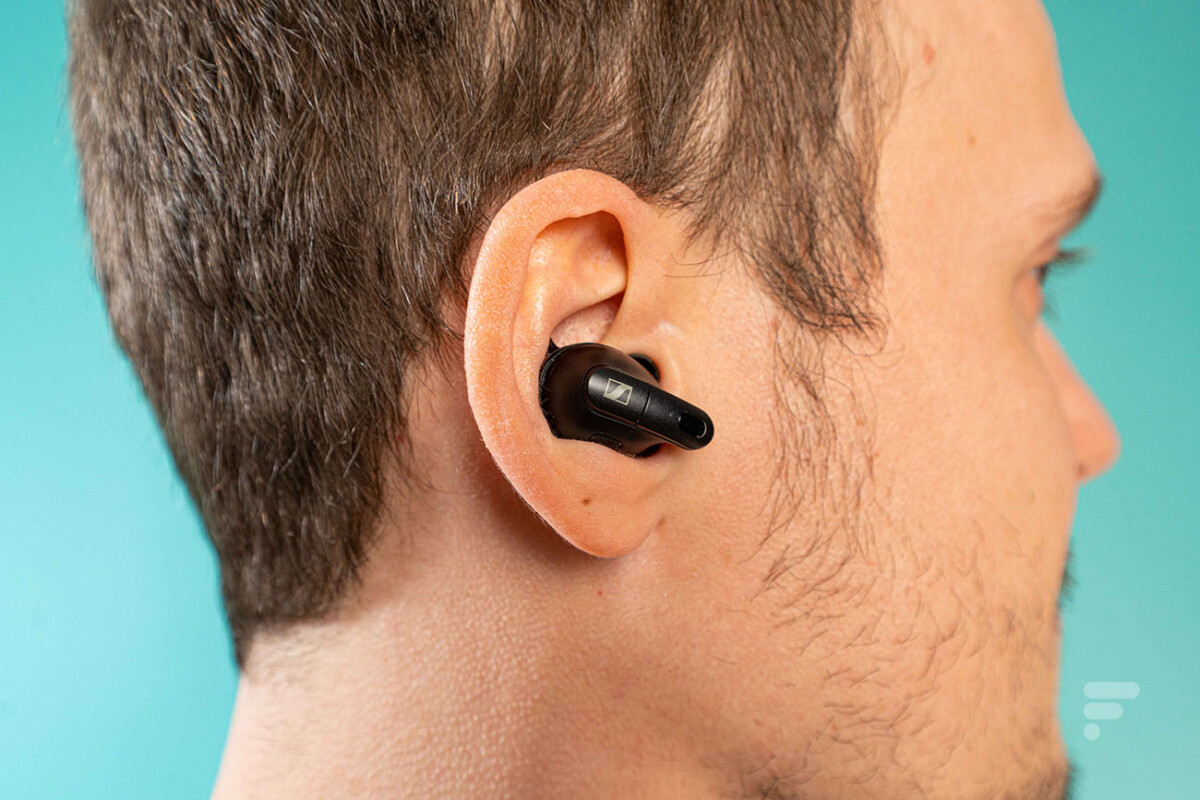
At first glance, the Sennheiser Conversation Clear Plus indeed look like regular wireless earbuds. They feature short stems oriented towards the mouth, where the microphone locations are clearly visible. As the name suggests, these earbuds are designed to analyze ambient noise, so discreet microphones are not the priority here.
The earbuds are in-ear and come with three pairs of silicone tips. These oval-shaped tips allow you to better fit the earbuds to your ear canal. Additionally, Sennheiser includes ear wings in three sizes for a secure fit in the outer ear. This approach is reminiscent of Bose’s recent QuietComfort Earbuds II.
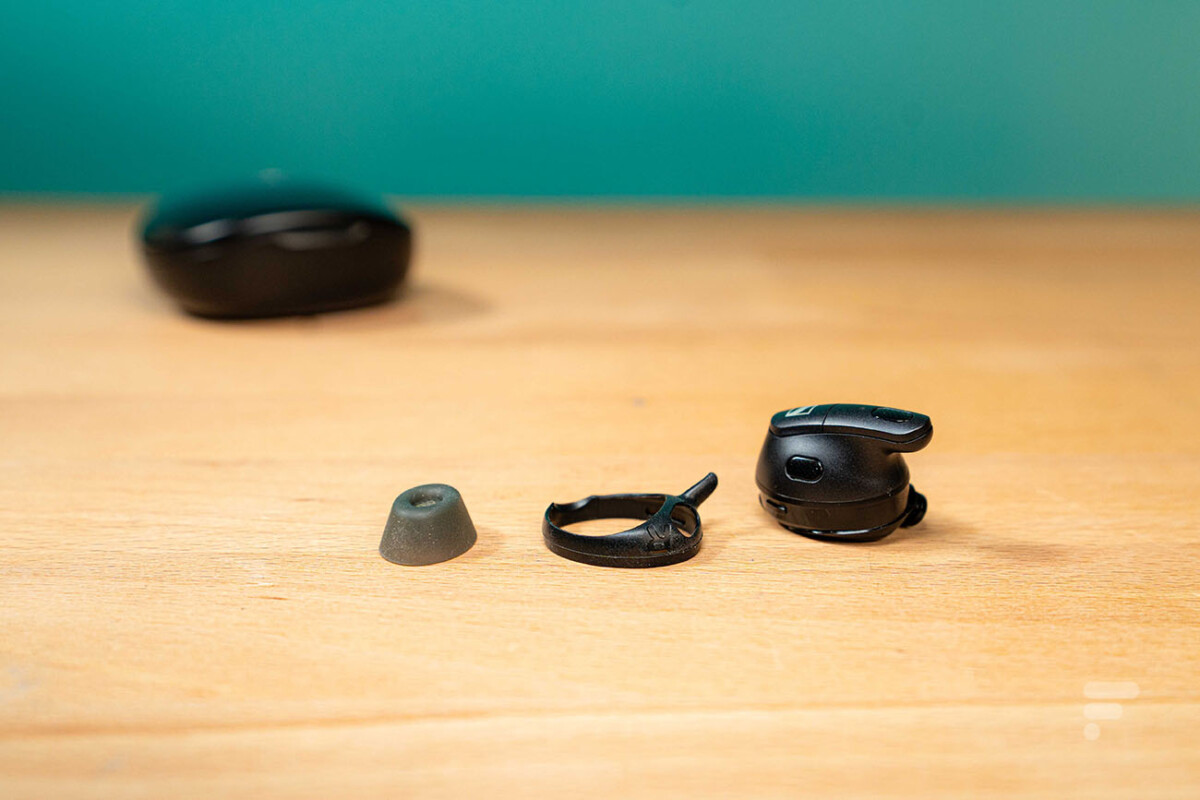
The Sennheiser Conversation Clear Plus are quite comfortable and can be worn without much discomfort for several hours. Of course, this depends on your ear size, but at 5.7 grams, they are relatively lightweight. However, they are somewhat bulky and may not suit smaller ears.
Sennheiser Conversation Clear Plus Charging Case
The charging case for the Sennheiser Conversation Clear Plus is large, measuring 68 x 66.9 x 32.6 mm and weighing 55 grams. This is not much for hearing aids, but it is significantly larger than most wireless earbud cases.
While the case can fit in a large jacket pocket or purse without much trouble, it may struggle to fit in a pants pocket. It certainly will not fit in a jeans coin pocket.
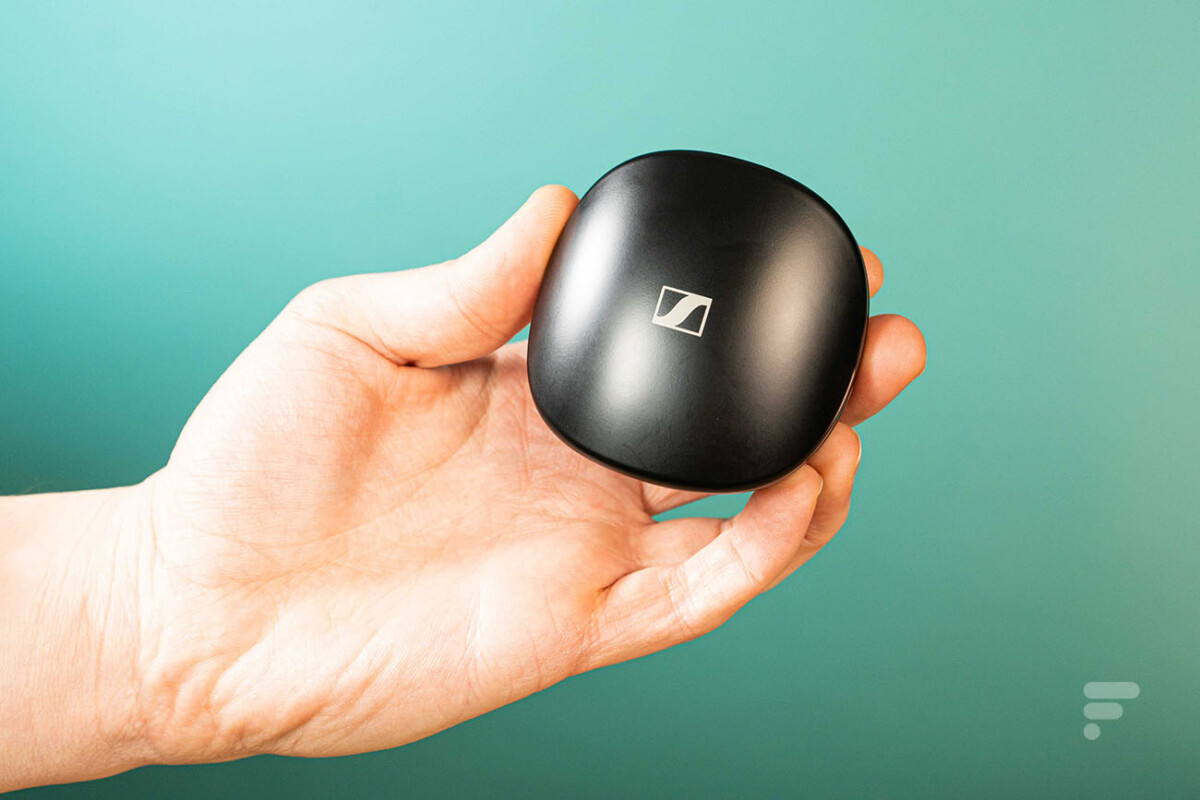
The case is made of plastic with rounded edges and features the Sennheiser logo on the top. Due to its large size, it can be difficult to open with one hand. Moreover, the earbuds can sometimes struggle to properly align in their charging slots. A more compact case with better earbud positioning would have been appreciated to avoid empty charges if the magnetic connectors are not perfectly aligned.
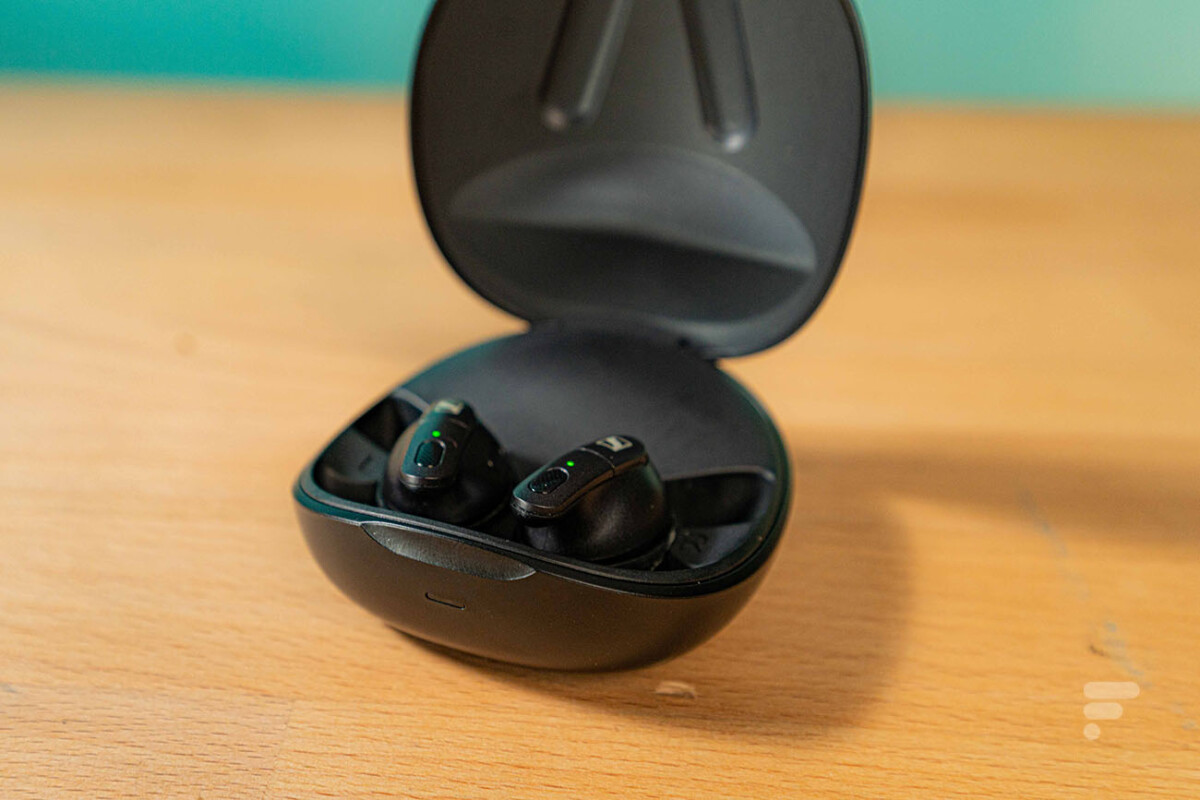
The Conversation Clear Plus case has an LED on the front, below the opening slot, and a USB-C port at the back for charging. For pairing, users will need to use the buttons on the earbuds.
Water Resistance and Sport Usage
The Sennheiser Conversation Clear Plus earbuds are not certified for water resistance. They are not advertised as being resistant to water, whether through immersion, sweat, or rain. As a precaution, especially considering their price, it is better to avoid using them during sports activities.
Usage and Application
As mentioned earlier, the Sennheiser Conversation Clear Plus earbuds do not have a pairing button on the case, allowing you to connect them to a smartphone or computer even without the case. To pair, press and hold the buttons on both earbuds for a few seconds until they blink blue. Then, the earbuds will appear in your device’s Bluetooth settings.
Sennheiser Conversation Clear Plus Controls
To control the Sennheiser Conversation Clear Plus, you’ll need to familiarize yourself with the physical buttons located at the top of each stem. Unfortunately, mastering the controls isn’t easy, and their functions depend on which mode you’re using. Generally, in streaming mode (for listening to music), the controls are as follows:
- Single press on the left: Increase ambient sounds
- Single press on the right: Increase music volume
- Long press on the left: Relax mode
- Long press on the right: Communication mode
- Double-tap on the left: Voice assistant
- Double-tap on the right: Play/Pause
It’s important to note that double-tapping is different from pressing the buttons; you’ll need to tap twice on the stem rather than pressing the buttons. Interestingly, Sennheiser offers both touch controls and physical buttons for this product.
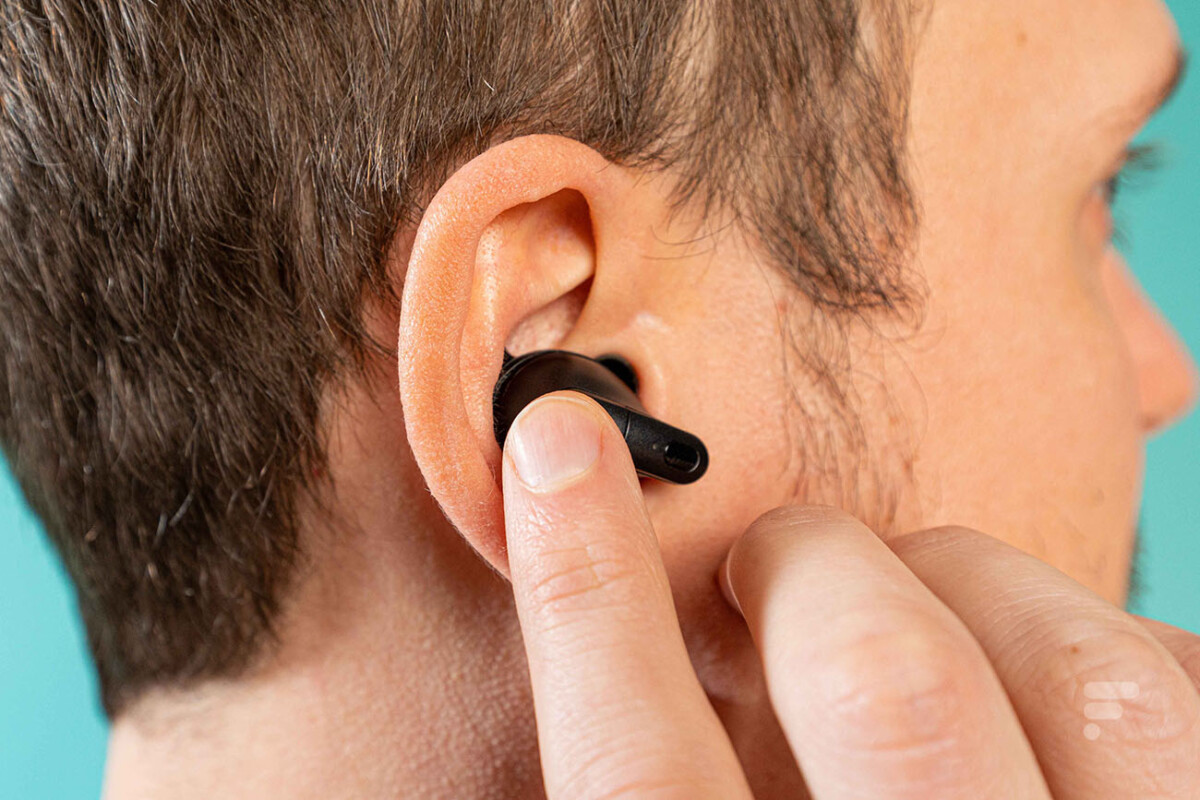
Unfortunately, you cannot use the physical controls to change tracks or reduce volume while maintaining active noise reduction; you’ll need to use your smartphone’s controls. Moreover, these controls are fixed and cannot be modified within Sennheiser’s dedicated app: Conversation Clear.
In addition, the functions listed above are for streaming mode, but there are two other modes: communication and relax. While double-tapping will produce the same controls in these modes, a short press will increase or decrease the volume. Long press will change modes. Getting used to these controls can be difficult, so keeping the user manual handy is advisable.
The Sennheiser Conversation Clear App
Although Sennheiser offers an app for its headphones and earbuds called Sennheiser Smart Control, the Conversation Clear Plus requires a separate mobile app: Sennheiser Conversation Clear. This app is listed on the Play Store and App Store as developed by Sonova, indicating that it is primarily designed to help people with hearing difficulties.
In practice, the Conversation Clear app differs significantly from Smart Control. Instead of offering multiple noise reduction modes, customizable touch controls, or an adjustable equalizer, the app focuses on optimizing sound volume and clarity. After completing several hearing tests, you’ll have access to three tabs: relax, communication, and stream.
In relax mode, the app offers active noise reduction with a slider to adjust the amount of external sounds allowed (from 0% to 100%). Communication mode, on the other hand, enhances your ability to hear surrounding sounds and potentially improves voice clarity. Stream mode allows you to listen to music or watch videos, automatically activating when you start playback and enabling you to balance external sounds with the audio from the earbuds.
Besides these three modes, the app can update the earbuds’ firmware and display their battery level. You can also update the sound profile if the initial settings for volume or clarity aren’t effective enough.
Unfortunately, you’ll need to create a Sennheiser account and log in to use the app.
Sennheiser Conversation Clear Plus Bluetooth Connection
The Sennheiser Conversation Clear Plus earbuds are compatible with Bluetooth version 4.2. This is far from ideal, and setting them up with a smartphone can be a Herculean task.
In practice, after the initial connection to the earbuds, your device will connect to each earbud separately, resulting in a total of three simultaneous Bluetooth connections: “ConCPlus,” “L-ConCPlus,” and “R-ConCPlus.” I have also experienced one of the two earbuds refusing to connect to the smartphone, despite the blue flashing LED indicating pairing mode. Moreover, with a Huawei P30, the earbuds could not connect individually, and only the connection to the “ConCPlus” pair was possible.

In short, this is far from the typical experience offered by Sennheiser’s wireless earbuds. We strongly hope that the Conversation Clear Plus will be updated in the future or, at the very least, that future models will offer a more modern Bluetooth controller. Furthermore, although we usually discuss audio Bluetooth codecs in the dedicated audio section, let’s note that the earbuds only support the SBC codec, not even AAC. This shortcoming also demonstrates the technological lag of the Conversation Clear Plus.
However, it’s worth noting that the earbuds offer relatively decent audio Bluetooth latency, measured at 186 ms in SBC. This is slightly high for comfortable gaming on a smartphone, but unfortunately, latency is inherent to Bluetooth connectivity, especially on Android.
Noise Reduction
The entire concept of the Conversation Clear Plus revolves around the three modes we discussed earlier. They manage active noise reduction through the Relax mode, transparency through the Communication mode, or a balance between these two functions while listening to music in Streaming mode.
Relax Mode
Relax mode can be compared to a standard active noise reduction mode, as long as you’re not listening to music. It simply isolates you in a bubble of calm without offering media playback – for that, you’ll use Streaming mode.
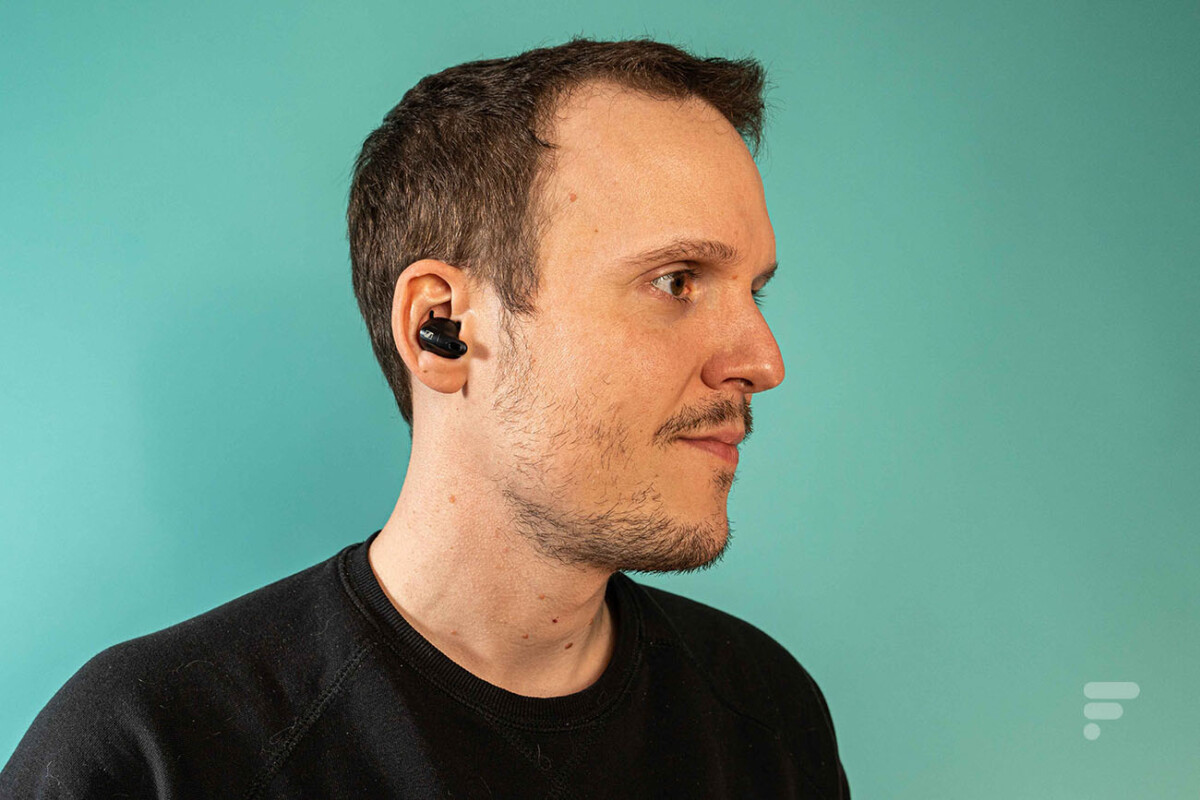
In essence, Relax mode analyzes ambient sounds captured by microphones and performs phase inversion so you don’t hear them in the earbuds. This mode allows you to adjust external sounds from 0 to 100%.
The noise reduction offered here is of high quality and effectively isolates you from lower frequencies. However, the earbuds struggle more with reducing mid and high frequencies, especially the more sporadic ones. For example, you will still hear mechanical sounds on the subway but much less of the wheels’ rumbling on the tracks. Human voices are also reduced but remain audible.
Overall, even with external sounds at 0%, the Conversation Clear Plus performs worse than the best active noise-canceling earbuds, such as Apple’s AirPods Pro 2 or Bose’s QC Earbuds II.
Communication Mode
In contrast, Communication mode allows you to focus solely on the frequencies of voices around you. In practice, this means that the earbuds will only capture voices, not all surrounding sounds. The idea is to enable you to have a conversation in a noisy bar or café while mainly hearing the person you’re talking to and not the background noise.
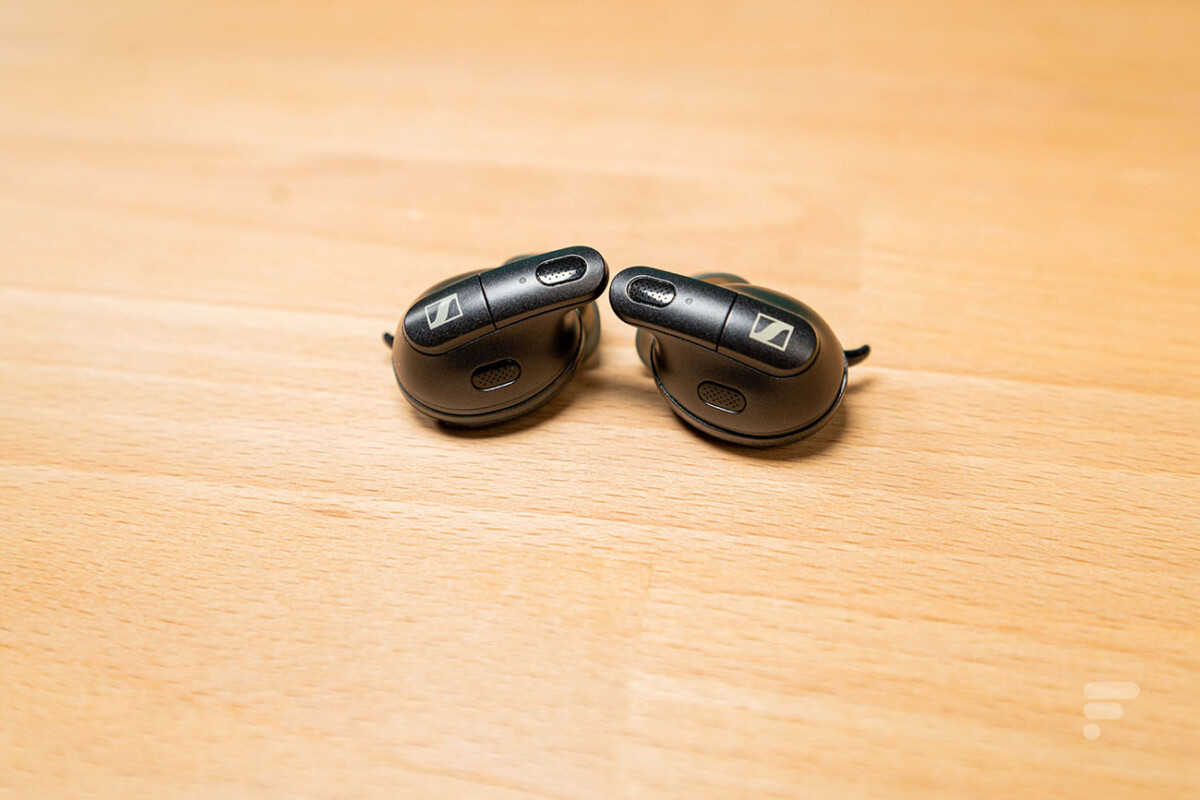
The earbuds analyze surrounding sounds to best gauge your environment and optimally calibrate the sounds to reduce and retain. In practice, this means that in a quiet room, the effect will be relatively weak. In a noisy location, however, the filter will be more pronounced. As a result, the earbuds tend to emphasize mid frequencies, resulting in a somewhat tiring sound that lacks depth.
This effect can be further enhanced with the “clarity enhancement” option, which really focuses on the mid frequencies of human voices, potentially causing even more listening fatigue.
Stream Mode
Lastly, the stream mode, used for music listening, can also be used to adjust ambient sounds. To do this, you will need to tweak the balance between external noises and sounds played on your smartphone, as mentioned earlier.
Audio
For the audio aspect of its earbuds, Sennheiser has incorporated large 12mm diameter transducers. According to the manufacturer, this allows for a frequency response of 20 to 20,000 Hz. It’s worth noting that the Conversation Clear Plus earbuds are only compatible with one Bluetooth audio codec: SBC.
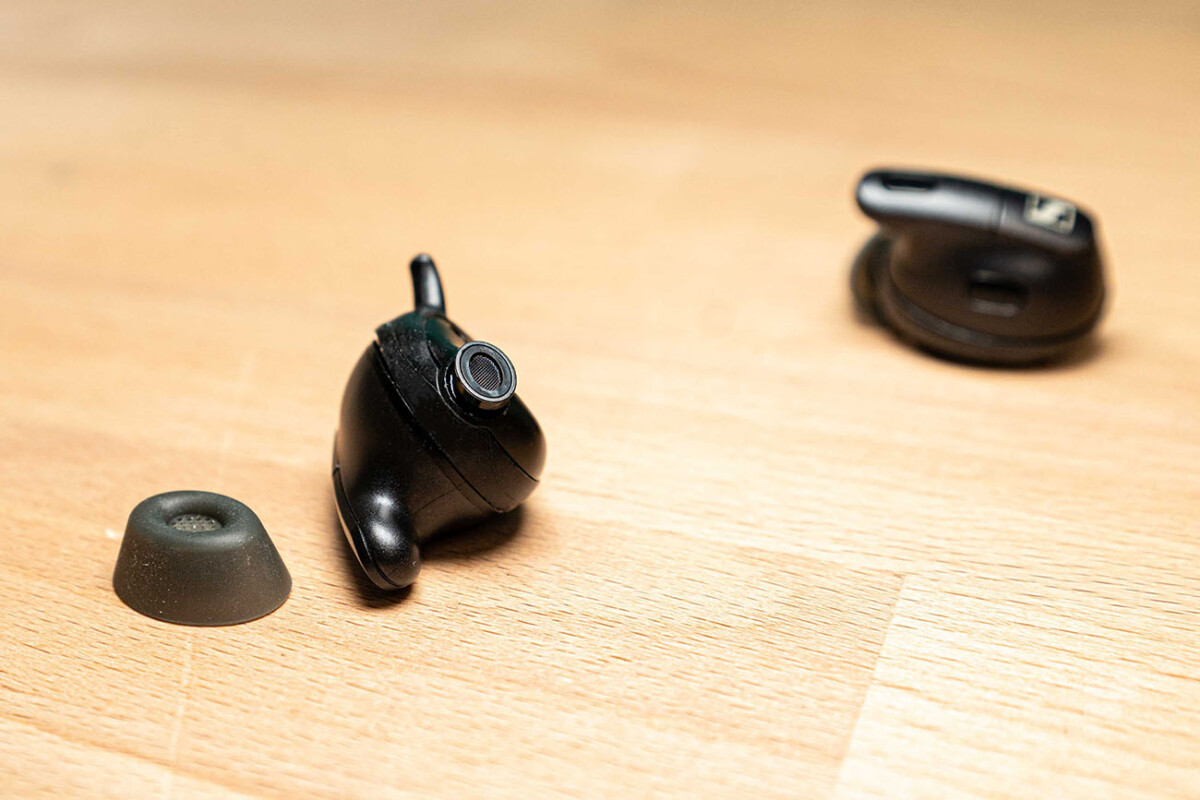
To test the Sennheiser Conversation Clear Plus, I connected the earbuds to a Vivo X80 Pro and listened to tracks on Spotify at “very high” quality, meaning ogg vorbis files encoded at 320 kb/s. I also used a medium sound profile, with sound clarity set at level 4 out of the 7 available options. Level 1 provided muffled voices, while level 7 limited frequencies other than the midrange. Sennheiser recommends level 4 by default.
Unfortunately, even though the manufacturer claims a frequency response of 20 to 20,000 Hz for its earbuds, the measured frequency response indicates a significantly weaker treble response. These earbuds struggle to reproduce frequencies above 10,000 Hz, which includes the highest-pitched sounds.
As discussed in our article on sound signature, this descending curve profile results in a rather dry sound with limited precision. In this case, the bass also lacks volume, further contributing to the dry sound.
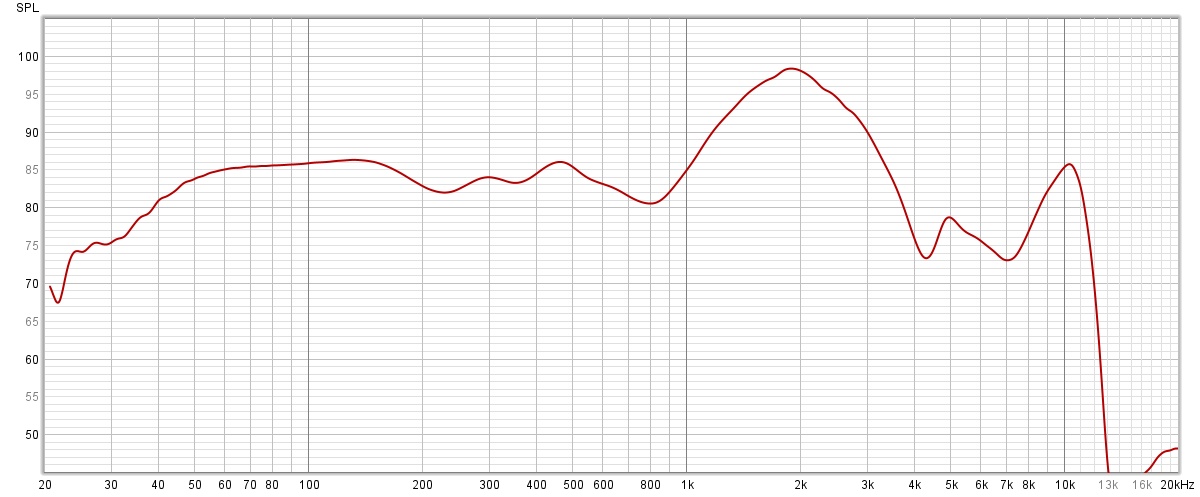
In effect, the Sennheiser Conversation Clear Plus earbuds are primarily designed to emphasize voices. The peak observed at 2000 Hz is indeed noticeable during music playback. On Supertramp’s The Logical Song, the usually engaging rendition due to bass depth becomes much more lackluster. Roger Hodgson’s voice takes precedence, accompanied by the keyboard or guitar. The same goes for Norah Jones’ Come Away with Me, a typically warm track that struggles to fully reproduce the singer’s timbre. The Conversation Clear Plus earbuds tend to excessively boost the midrange and cause the rest of the spectrum to disappear.
In simpler terms, the earbuds sometimes feel like entry-level products. This is particularly unfortunate considering the price of the Conversation Clear Plus.
Naturally, this sound signature is even less appealing for jazz or rock tracks and even worse for electronic or hip-hop tracks. Eminem’s Berzerk loses its fullness and comes across as dry and flat when played through the Sennheiser Conversation Clear Plus.
In short, while the earbuds are fairly convincing in transparent mode, they significantly lag in musical performance.
Microphone
The Sennheiser Conversation Clear Plus earbuds feature microphones facing the user’s mouth. This suggests that the earbuds are particularly effective at capturing your voice and relaying it to the person on the other end of the line. Unfortunately, this is not the case.
Sennheiser’s earbuds tend to reproduce all surrounding noises, making it difficult for your voice to be heard in a noisy environment. Not only will background noises quickly dominate – despite the beamforming microphones – but the microphones are also very sensitive to wind noise. During my test, my conversation partner, who is accustomed to me calling with various wireless earbuds, described the experience as “very bad” without hesitation.
Indoors, the earbuds perform slightly better and can indeed reproduce your voice, albeit not particularly clearly… provided you are in complete silence. Even the slightest noise tends to be picked up by the microphones. This applies to both occasional and constant noises, such as a running water faucet while doing dishes.
Battery Life
The Sennheiser Conversation Clear Plus earbuds come with 70mAh accumulators, while the charging case houses a 500mAh battery. According to Sennheiser, this battery life would allow the earbuds to operate for 9 consecutive hours.
In my experience, I tested the Conversation Clear Plus’ battery life in streaming mode, listening to music while minimizing surrounding noise. This simulates noise reduction found in traditional earbuds.

Although Sennheiser claims up to 9 hours of battery life, I found the actual battery life to be much longer with these settings. The left earbud shut down after 12 hours and 46 minutes. After that, I could no longer use the right earbud in streaming mode and had to switch to communication mode to drain the remaining seven battery percentage points, which took an additional 2 hours and 10 minutes.
Overall, even if we only consider the battery life of the first earbud to shut down (in this case, the left one), the Conversation Clear Plus earbuds offer impressive battery life for wireless earbuds. Most struggle to exceed seven to eight hours of battery life. However, this is far from the battery life offered by genuine hearing aids, which typically last around 24 hours.
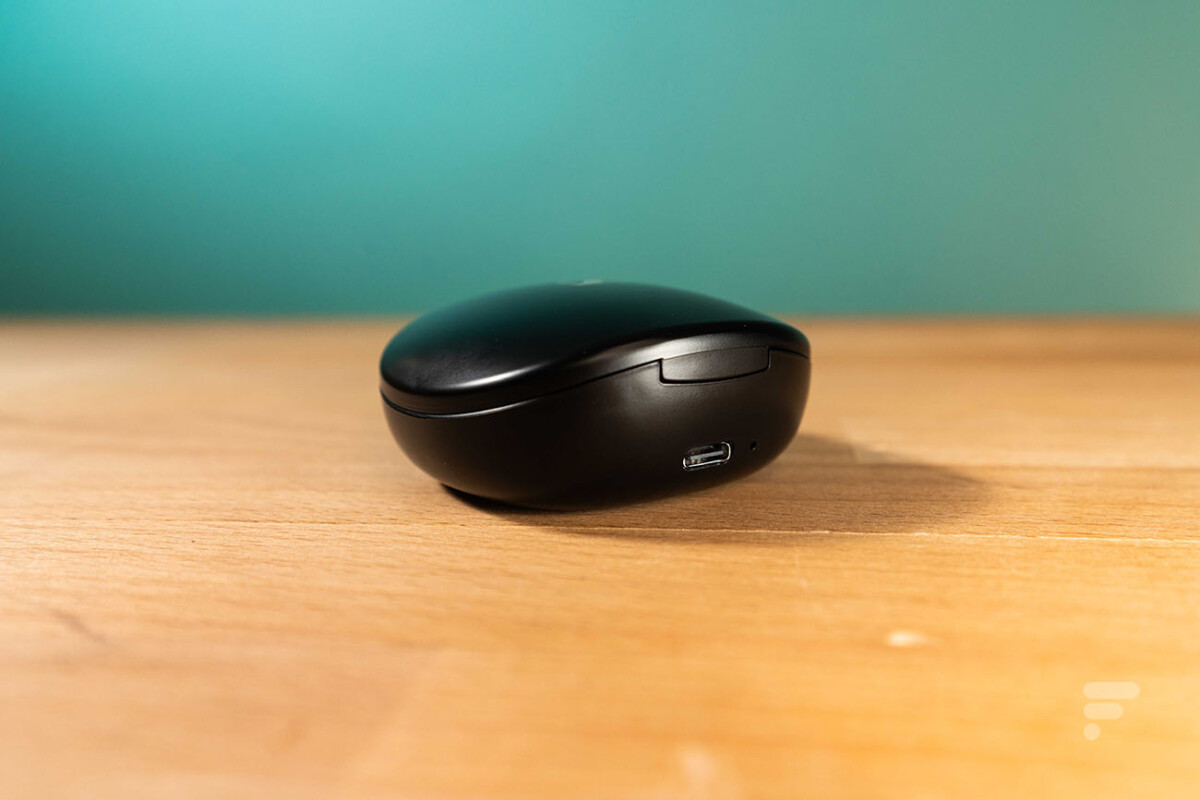
Recharging the earbuds in their case, on the other hand, is a bit more challenging. The earbuds need to be perfectly aligned with the connectors, which is not very easy due to the width of the slot. Moreover, the charging process is quite lengthy. Starting with completely drained earbuds, it took me 2 hours and 27 minutes to reach a 100% charge on the Sennheiser Conversation Plus. In comparison, most earbuds on the market offer a full charge between 30 and 60 minutes.
The charging case itself can also be recharged using USB-C with a short USB-A to USB-C cable (no wall adapter provided) or wirelessly through Qi wireless charging.
Price and Release Date
The Sennheiser Conversation Clear Plus earbuds have been available since January 20th. Offered only in black, they are priced at $849. While this price may seem quite high for a pair of wireless earbuds – and it is – it should be compared to the price of hearing aids, which are usually offered at over $1000. However, unlike hearing aids, Sennheiser’s earbuds do not qualify for full or partial reimbursement by health insurance, as they are not considered a medical device.
Pros & Cons
Sennheiser Conversation Clear Plus Pros:
- Enhanced vocal clarity
- Efficient noise cancellation
- Excellent call quality
- User-friendly app
Sennheiser Conversation Clear Plus Cons:
- Mediocre music playback performance
- Potential discomfort during wear
- Subpar transparency mode clarity
- Expensive price point
- Tendency to produce sibilant sounds in voices

